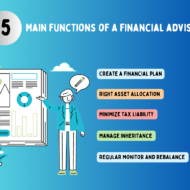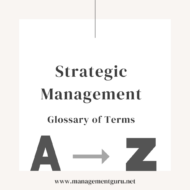Posted by Managementguru in How To, Human Resource, Leadership, Motivation
on Jun 10th, 2023 | 0 comments

Being someone’s enemy isn’t exactly what you want to deal with in the workplace. Having a conflict, misunderstanding, or just even rubbing someone the wrong way can put even more stress into your work life. Although this is something every working company is going to experience at some stage, you just need to hope that you are not a part of it. If you are a manager, however, then you may be a top contender for this. Being overly disciplined can lead to staff members resenting or disliking you. This can then lead to a lack of cooperation or respect. It is not a good idea to just counteract your discipline with friendliness. Many, usually new, managers are too afraid to apply discipline for fear of hurting someone’s feelings. Although you might be everyone’s’ friend, it could harm the business. A lack of discipline is something that causes lots of cracks and issues throughout any business. Employees start taking things for granted and their working mentality might be affected. Finding a balance between the two is hard. However, it is something you should strive for in your manager role. Acting in the following manners can help you to apply this. Setting Rules and Protocols From the first day that you are the manager, it is time to get started on this balance. One of the best early decisions you could make is setting rules and protocols within the company. Having a strict list of rules means that you won’t have to make too many disciplinary judgement calls. If someone breaks the rule and the discipline has already been stated, then no one can judge you for being too harsh – you are just abiding by the rules. This can also be the case for the likes of routine checks. You don’t want to feel as if you are targeting employees, so having a scheduled check for everyone can help to avoid this. An example of this could be routine drug and alcohol testing. Start each week by using mobile drug testing that comes to you in your business. Being consistent with this means no one will feel targeted. Hearing Employees Out Employees are not going to agree with everything you say. Although these disagreements are common, you shouldn’t presume they are wrong just because you are the manager. Doing this will bridge a gap between employee equality, and your workers may feel belittled. So, in any instance from appealing a dispute or even just a suggestion, make sure you are hearing people out with open ears. Being Friendly When you are not disciplining someone or needing to act at your most professional, try to be as friendly as you can. Making small talk in the canteen is not going to affect the productivity of your business. What it might do instead is show employees that you are not such a bad person, even if you have had to apply discipline in the past....

Posted by Managementguru in Business Management, Financial Management, Personal Finance, Strategy
on May 31st, 2023 | 0 comments

A lot of entrepreneurs are a little too prideful and controlling for their own good. They like to sort out and organize every aspect of their business to ensure it perfectly fits their vision. There’s just one issue: no single person is able to cover every element of their business to a sufficient standard. Even if they are capable in many different areas, a business owner doesn’t have the time to complete everything successfully. This can certainly be the case when it comes to organizing their finances and making future business decisions. This is why it makes sense to hire a local financial advisor. Not convinced? Here are five reasons to bring in this professional help for your business. 1. Expertise in a specialist area It’s no secret that finance is a tricky subject to delve into – particularly for those that are not well-versed in this area. Yes, looking at your revenue and expenses is a relatively easy task, but there’s a lot more to your financials than that. Think about your taxes, the laws you have to follow, judging investments, and so on. With a financial advisor on your side, you suddenly benefit from their expertise. This means your business finances can be maximized when an advisor reviews your situation on a frequent basis to ensure your money is being spent the right way. 2. Local knowledge and support As for why you should go locally with a financial advisor, there are various reasons why this is the case. Say your company is based in Stuart, Florida. Rather than picking a professional in a different state or even city, you can hire a financial advisor in Stuart, Florida to help your business. You will be able to easily meet up with your advisor in person, which really helps you to understand what is going on. Their knowledge on local laws and regulations, how items are enforced and so on can really help you to get the best advice available. 3. A long-term strategy A professional financial advisor is able to assist your business in numerous ways. One of the most valuable is how they can help you to map out a long-term strategy to follow. With a comprehensive plan in place, there’s no guesswork and ending up in the wrong location. An advisor can tell you the destination, how to get there, and what moves to make if any problems do occur. 4. Save money It’s true: you have to pay for the services of a local financial advisor. However, the long-term savings you gain justify this initial outlay. Ultimately, an advisor is there to improve your finances by suggesting the best financial decisions for your situation. That means you are more likely to maximize your profit margins. 5. Lower stress levels Stress is a natural part of running a business. That said, you can relieve at least some of that stress by bringing a financial advisor on board. You are safe in the knowledge your finances are receiving the right level of attention where the right investments are being made to support your company’s...

Posted by Managementguru in Strategy
on Feb 14th, 2023 | 0 comments

This is a comprehensive curated list of Strategic Management Glossary for the enefit of management students, professionals and business bloggers. A Action PlanThe action plan lists the specific actions that must be taken, by whom and by when in order to achieve an overall goal or implement a strategy. Some people include the costs of each action in the action plans, resulting in budget information being included in the action plans, as well. Action plans together are sometimes referred to as the Implementation Plan. AcquisitionWhen one company, the acquirer, purchases and absorbs the operations of another, the acquired. Alignment model of strategic planningFocuses especially on aligning internal operations to most effectively and efficiently work toward the mission of the organization. Activity Ratios Inventory turnover and average collection period measure how effectively a firm is using its resources. Advantage A way to evaluate strategies; to determine if a particular strategy creates or extends a firm’s competitive superiority in a selected area of activity. Aggressive Quadrant In a SPACE matrix analysis, when the firm’s directional vector points in the upper-right quadrant, the firm should pursue aggressive strategies. Annual Objectives Short-term milestones that organizations must achieve Autonomy Whether an individual or team of individuals within an organization has the freedom to develop an entrepreneurial idea and then see it through to completion. B Balanced ScorecardA framework for categorising your strategy into four interdependent balanced areas- financial, customer, internal business process, and employee learning & growth. Baseline Base level of previous or current performance that can be used to set improvement goals and provide a basis for assessing future progress. Bench marking A process of compiling and comparing data on business performance of your organization with that of competitors or industry averages to understand where you sit in comparison, identify best practices, and measure progress. Budget A description of the monetary amount that will be allocated to a given project or action. Business Plan A formal guide outlining your business goals and plans to achieve the goals. It may also include background information on the organisation attempting to achieve these goals. Board of Directors A Board is the group of people who are legally charged to oversee the operations of a corporation, whether for-profit or nonprofit. Board Insiders Members of the board of directors that are generally employed inside of the organization. Board Outsiders Members of the board of directors that are generally employed outside of the organization. Buy-in Obtaining agreement from key stakeholders that the proposed plan is acceptable. Business Model Canvas The Business Model Canvas is a strategic management and lean startup template for developing new or documenting existing business models. It is a visual chart with elements describing a firm’s or product’s value proposition, infrastructure, customers, and finances. Backward Vertical Integration Moving back along the value chain and entering a supplier’s business. Behavioral Control Focuses on controlling the actions of individuals through rules and procedures. Best-Cost A strategy where the firm attempts to offer a hybrid of both lower cost and differentiated products or services, combining the two basic strategies. Blue Ocean Strategy Creating a new, untapped market rather than competing with rivals in an existing market. Broad Cost Leadership A strategy that offers the lowest price in the market for that product or service. Broad Differentiation A strategy that offers something unique that differentiates their product or service from others. C Capacity Building Capacity building is the process of creating, improving and retaining core skills, knowledge and capabilities of an organization’s people and processes. Capital Capital refers to the assets that are owned by an entity and are available for use. Capital is usually described in terms of money,...

Posted by Managementguru in How To, Sales, Strategy
on May 24th, 2022 | 0 comments

Why Is Pricing Strategy Important? Pricing is of ultimate importance because every buying decision is based on pricing. We need to put a proper pricing label on our products in such a way it is convincing and appealing as well. The key is to strike a balance that will generate revenue without putting off potential customers. Setting prices too high can make a product prohibitively expensive for your target audience while setting prices too low can threaten your bottom line. Fortunately, there are a number of different pricing strategies that can help you determine the right price for your products. Having a robust pricing strategy gives you a competitive advantage by allowing you to meet consumer demand in a competitive market. Info: Masterclass Here are 7 steps to price your product. 1. Identify your ideal buyers What is an ideal customer? – Your ideal customer is someone who gets their exact needs met by what your’e offering. For detailed info visit AudienceOps 2. Perform competitor and market research Competitive market research centres on finding and measuring key market metrics that help identify differences between your products and services and those of your competitors. For detailed info visit HubSpot 3. Determine your costs A fundamental principle of pricing is that you need to cover your costs and then factor in a profit. That means you have to know how much your product costs. You as well need to understand how much you need to mark up the product and how many you need to sell to turn a profit. For detaile info visit Inc 4. Compute your average customer’s Lifetime Value (LTV) What is Customer Lifetime Value (LTV)? – The customer lifetime value (LTV), also known as lifetime value, is the total revenue. In accounting, the terms sales and a company expects to earn over the lifetime of their relationship with a single customer. For detailed info visit CFI 5. Select the right pricing strategy If a business cannot identify or arrive at the right price point for their products based on value, it is definitely going to be an uphill battle against their competitors. For detailed info visit Forbes 6. Use the best-fitting pricing model for you A pricing strategy is the way you set the price.A pricing model is a kind of price format – it’s part of the way you package and present your goods and services to the customer. For detailed info visit Qualtrics 7. Implement, experiment, and learn In today’s marketplace, businesses can no longer afford to play it safe. It’s time for pricing to get experimental. For detailed info visit IntelligenceNode Outcome When You Want to Increase the Price of Your product Losing out on new clients if you change your rates in relation to your competition.Loyal clients that have been with you for several years might feel, they deserve to stay at the lower price point.Fear of increasing the price might put you to remain in the status quo and not do anything about it. In her Tips for Pricing your Handmade Goods blog on Craftsy, artesian entrepreneur Ashley Martineau suggests this formula: Cost of supplies + $10 per hour time spent = Price ACost of supplies x 3 = Price BPrice A + Price B divided by 2 (to get the average between these two prices) = Price C For example, you have determined the cost to purchase supplies to make one unit of your product is $4.28 and it takes you a half-hour to complete it, then your formula would look like this: $4.28 + $5 = $9.28 (Price A)$4.28 x 3 = $12.84 (Price B)$9.28 + 12.84 = $22.64$22.64 / 2 = $11. 32 You also need to calculate the tax...

Posted by Managementguru in Business Management, E Commerce, International Business, Marketing, Sales, Social Media, Strategy
on Jan 25th, 2022 | 0 comments

Business has become incredibly more competitive over the years and it has become increasingly more difficult to find a niche in any market. As a business owner it should be your job to try to find and create new opportunities for your business. The key to any product or service is finding the right customer demographic and finding them in large numbers. You could sit in your store and wait for the footfall to pass by but you will be waiting a long time before many thousands of people walk into your store. There is a better option and it comes in the form of trade exhibitions and these can actually change the future of many businesses. No business can afford to ignore these exhibitions and trade shows because they offer so many benefits to your business and by not attending, you are surely missing out on many opportunities for growth. The difficult thing about exhibitions or trade shows like these is that it can be quite difficult to transport your goods to the destination. You would have to have specialised transport to do so and experience lifting and carrying specialist equipment. You can use demo equipment management from Tecdis and these people can make sure that everything gets to its final destination. If you’re still not sold on the benefits of attending exhibitions or trade shows, then maybe the following can help you to make a more informed business decision. More opportunities to meet & greet – It is vitally important that your business networks with other businesses within your industry and the key to higher profits is more customers and so you need to be able to grow your customer demographic for this to happen and communicate with customers. When you attend such things as trade exhibitions, it allows you to stand out from your closest competitors and it is the perfect way to meet new clients. Trade shows allow you to meet with potential customers face-to-face and really connect with them. There are also real opportunities for people to buy your products and services while there and you can offer special promotional prices to encourage them to do so. Increased brand awareness – The opportunity to be able to actually greet your customer demographic provides the perfect opportunity to show off your brand and to increase your business image. In most cases, local tabloids like newspapers will be there and so your business may get an opportunity for exposure that you won’t even have to pay for. Anything that draws attention to your business in a good way should be embraced with both hands and it also gives you the chance to give away free branded items like pens, hats and key rings to new customers. Just by being there, you are marketing your business and this is one of the most cost-effective ways of doing so. If you get an opportunity to attend such an event, you really should take it and run with...










